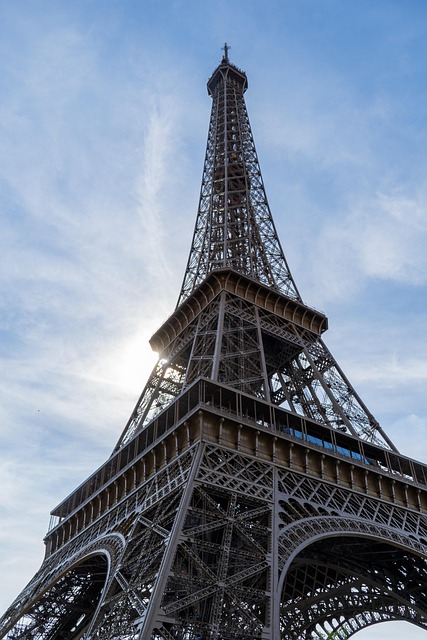Sector 33-A in Karachi is a diverse, economically vital hub blending residential, commercial, and industrial spaces. Initially an industrial zone, it has transformed into a bustling center for tech startups and modern commerce, driven by Karachi's economic significance and technological advancements. Key industries like textiles, automotive, electronics, and IT thrive here, contributing significantly to the city's growth. Karachi's strategic location and robust infrastructure facilitate global trade, enhancing its role as a major logistics hub. While facing challenges from rapid urbanization, Sector 33-A offers ample opportunities in sectors like technology and renewable energy, requiring adaptation to digital transformation and sustainable practices for future prosperity.
Karachi’s diverse economic landscape is defined by numerous sectors, with Sector 33-A standing out as a vibrant hub. This comprehensive guide explores the intricate details of this dynamic area. From its geographical location within Karachi to its historical growth and key industries, we uncover the factors shaping its success. Understanding the sector’s infrastructure and logistics advantages is crucial for gauging its potential. Furthermore, this article delves into the challenges faced and presents a glimpse into the future prospects that could drive further economic expansion in Sector 33-A.
Understanding Sector 33-A in Karachi: A Geographical Overview

Sector 33-A is a vibrant and dynamic part of Karachi, Pakistan’s largest city. Geographically, it spans an area rich in cultural diversity and economic activity, nestled within the metropolitan region’s bustling commercial heart. The sector is characterized by a unique blend of residential, commercial, and industrial spaces, reflecting Karachi’s multifaceted identity. This diverse landscape makes Sector 33-A not just a place but a vibrant tapestry where folks from various walks of life intersect.
The geographical overview of Sector 33-A is further enhanced by its strategic location, bordering key thoroughfares and commercial hubs. This accessibility has fostered a robust business environment, attracting enterprises ranging from small startups to large corporations. The sector’s dynamic nature, driven by the energy of Karachi, positions it as a pivotal node in the city’s economic landscape, where industries thrive, businesses flourish, and communities grow.
Historical Development and Evolution of the Sector

The historical development and evolution of Sector 33-A in Karachi reflect a dynamic urban landscape that has adapted to changing economic and social needs over time. Originally established as part of the city’s expanding industrial zone, this sector started with modest manufacturing units and warehousing facilities, catering primarily to local businesses. Over several decades, however, it witnessed a significant transformation driven by factors such as growing population, increased urbanization, and Karachi’s position as Pakistan’s economic hub.
This evolution led to the diversification of Sector 33-A beyond traditional industries. Modern commercial spaces, tech startups, e-commerce hubs, and innovative business solutions began to emerge, marking a shift towards a knowledge-based economy. The sector’s adaptability has been further boosted by technological advancements, making it a vibrant and ever-changing part of Karachi’s economic tapestry.
Key Industries Dominating Sector 33-A

Karachi, Pakistan’s economic powerhouse, is home to a diverse range of industries that drive Sector 33-A. This vibrant sector boasts a robust landscape where several key industries stand out for their significant contributions. The textile industry, renowned globally for its quality and variety, is a pillar of this sector, contributing substantially to the city’s economic growth. With numerous mills and manufacturing units, Karachi leads in producing cotton, silk, and synthetic fabrics, catering to both local and international markets.
Beyond textiles, Sector 33-A is characterized by thriving sectors like automotive, electronics, and information technology. The automotive industry, with its assembly plants and dealerships, drives economic activity while contributing to job creation. Electronics manufacturing and assembly units add another layer of diversity, leveraging Karachi’s strategic location for easy access to regional markets. Moreover, the city’s robust IT sector is a hub for software development, outsourcing, and digital services, attracting talent from across Pakistan.
Infrastructure and Logistics: Facilitating Economic Growth

Karachi, as Pakistan’s financial hub and a bustling metropolis, relies heavily on robust infrastructure and efficient logistics to sustain its economic growth. The city’s extensive network of roads, bridges, and ports acts as the backbone, connecting industries, businesses, and markets across the region. This well-developed infrastructure facilitates seamless movement of goods, services, and people, fostering an environment conducive to trade and commerce.
Logistics play a pivotal role in this ecosystem, ensuring that raw materials reach manufacturing units on time and finished products are delivered to both local consumers and international markets efficiently. Karachi’s strategic location with direct access to the sea further enhances its significance as a major logistics hub. This seamless interplay between infrastructure and logistics contributes significantly to the city’s economic vibrancy and positions it as a gateway for regional and global trade, driving growth in various sectors within Sector 33-A and beyond.
Challenges and Opportunities for Future Prospects

Karachi, as a bustling metropolis, presents unique challenges and opportunities for prospects in Sector 33-A and beyond. One of the primary challenges is managing rapid urbanization, which brings infrastructure strain and environmental concerns. However, this also opens doors to innovative solutions, especially in real estate development and smart city initiatives. The city’s diverse economy offers a myriad of opportunities, with sectors like technology, healthcare, and renewable energy experiencing significant growth.
For future prospects, adapting to the changing landscape is key. This involves embracing digital transformation, sustainable practices, and staying abreast of government policies aimed at urban development. By capitalizing on Karachi’s vibrant tapestry of industries, individuals can navigate these challenges and seize the opportunities that shape the city’s progress, ensuring a prosperous future for Sector 33-A and its surroundings.
Sector 33-A in Karachi stands as a vibrant example of how strategic geographical positioning can drive economic growth. With a rich historical backdrop and diverse key industries, it has become an indispensable part of the city’s landscape. The robust infrastructure and logistics network further strengthens its potential for sustained development. While challenges remain, addressing these will unlock new opportunities, ensuring Sector 33-A continues to be a thriving hub, contributing significantly to Karachi’s overall economic tapestry.
